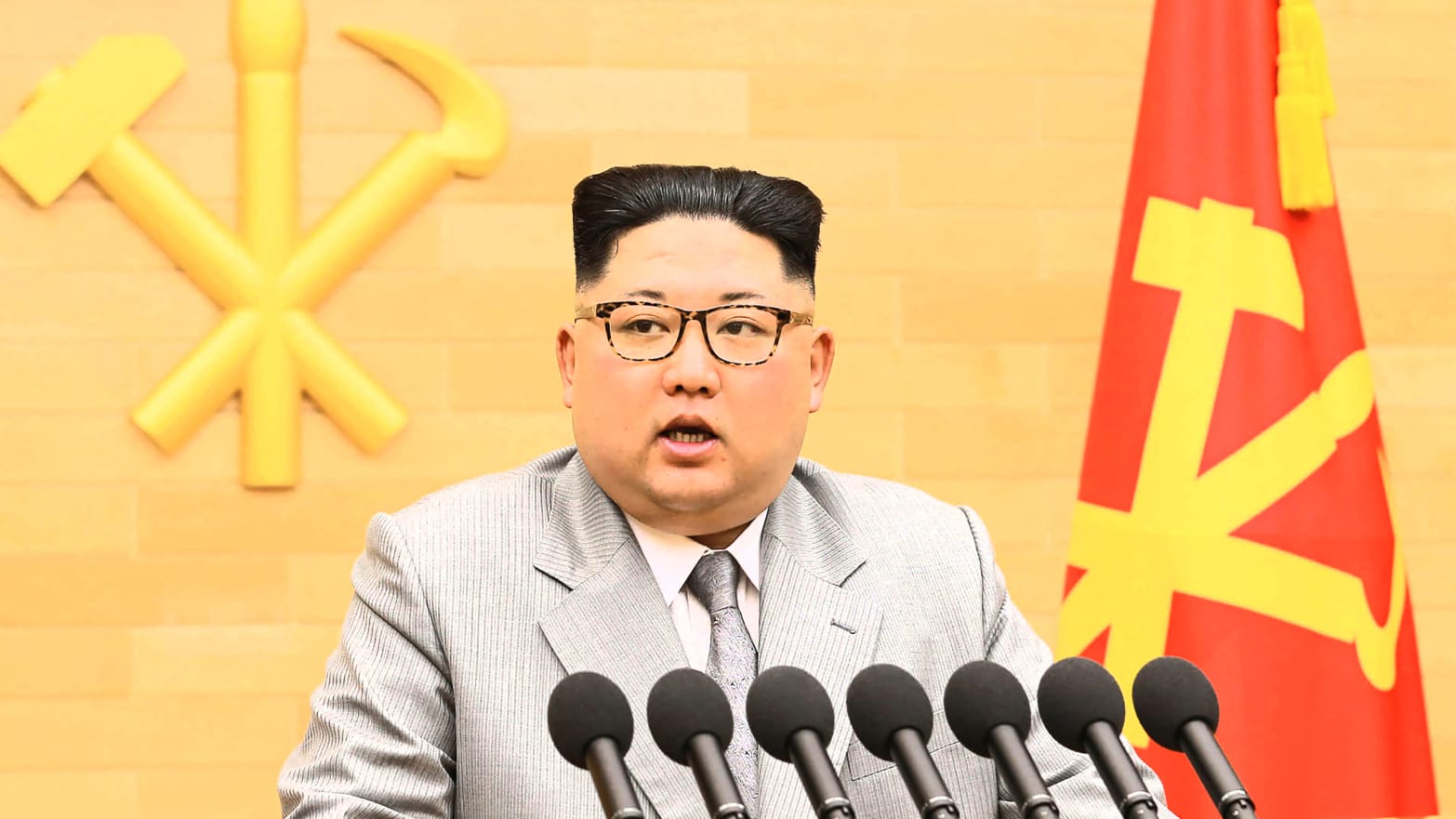CAMP HUMPHREYS, South Korea—Kim Jong Un’s ongoing charm offensive is hitting the right notes, while U.S. and South Korean war games are being played down as though they’re hardly happening.
At this sprawling U.S. military base 40 miles southwest of Seoul, the expanding home of more than 30,000 U.S. troops, civilian workers and their families, you would never know some 11,000 Americans are joining 300,000 South Koreans in what the U.S. command insists are the same intensive exercises staged every year to stay in fighting shape against North Korean attack.
Only this year there are no TV cameras, no reporters, nobody from the media to witness U.S. marines from Japan scrambling onto the beaches on the east coast; no sight or sound of warplanes, at least that anyone has seen or heard; no reports of aircraft carriers or submarines off South Korea’s west or east coasts; and no roar of artillery and tank fire.
Rather, as the war games began on Sunday, South Korean TV audiences heard some of their favorite K-Pop singers carrying on not in Seoul but in Pyongyang. And right there in the audience, smiling and applauding, was North Korea’s leader Kim Jong-un. In South Korean pool reports from the North Korean capital, the leader was said to have been “deeply moved” by performances that once were banned from North Korean TV screens.
If Kim seemed to be stealing the show, however, the Americans still want it known nothing much is changing—either in U.S. policy toward North Korea or, for that matter, when it comes to the war games despite the low profile.
“There has been no shift in our policy,” the U.S. acting ambassador, Marc Knapper, told a gathering of the Korean-American Club, an assortment of mostly conservative South Koreans and American officials and businesspeople. Lest anyone think the Americans are unwilling to deal with the North Koreans—even as President Trump looks forward to sitting down with Kim in May—Knapper made clear “any meeting first and foremost” has to focus on CVID, “the complete, verifiable and irreversible denuclearization of the Korean Peninsula.” That goal was “necessary and nonnegotiable,” he said, according to Seoul’s semi-official Yonhap news agency.
Knapper’s remarks—which echo what Trump has been saying all along about what he’ll tell Kim Jong Un when or if they really meet as advertised—was barely noted while Kim’s smiling face flashed on South Korean TV screens. His image was adorned by that of his charming wife, Ri Sol-ju, smiling politely beside him, plus pictures of Kim amid South Korean performers, including an all-girl group called Red Velvet doing the song-and-dance numbers for which they are beloved in the South.
All those K-poppers, Taekwondo wrestlers and musicians, about 150 all told, will perform one more time on Tuesday in the run-up to Kim’s summit on April 27 with South Korea’s President Moon Jae-in the “Peace House” on the South side of the “truce village” of Panmunjom where the Korean War armistice was signed in July 1953.
Whether Kim meets Trump as promised, however, may depend on whether the good-will endures through the war games, which the South Koreans have said will last only a month this year but the Americans say may extend into May. The first set of exercises, called Foal Eagle, is going strong right now, even if no one can see or hear it, and the two-week Key Resolve exercises, largely played on computers, is due to begin in a week or two.
Colonel Chad Carroll, speaking for U.S. Forces Korea, was vague about what’s going on. “I don’t think it’s all been decided,” was his studied response when asked if a U.S. aircraft carrier would be close by as usual launching navy and marine aircraft to fly in tandem with South Korean Air Force fighters. “I need to check with the Navy folks.”
And what about those heavy-duty U.S. Air Force bombers from Andersen Air Base on Guam, so useful in shows of force in response to North Korean missile tests? “I need to check with the Air Force,” he said.
The colonel was clear, though, about the exercises being “very similar to past years” even if no one wanted to say what would happen next. “Our job is just to stay ready,” he said, while the North Koreans "are going through their own training cycle as well."
Complicating the exercises, U.S. forces are still relocating their headquarters south to Camp Humphreys from Yongsan, the historical U.S. base in Seoul where the Japanese made their headquarters until their surrender in 1945. They’re also moving here from Camp Casey, home of the second infantry division, which for years has defended the northern approaches to Seoul down which the North Koreans poured in the first days of the Korean War.
In the “camp town” outside Camp Casey, army soldiers saunter down streets past nightclubs and shops either closed or losing business as elements of the division move south. On a typical night, they dance and play pool and darts with Philippine bar girls in near-empty watering holes with names like Candy Club and Queen and Club Rendezvous. Most of them say they know nothing about any war games though one allowed he might be doing “a little bit.”
At the division headquarters at nearby Camp Red Cloud, also about to shut down and move south, Lieutenant Colonel Junel Jeffrey had only this to say about what the “2ID,” the Indianhead division, was up to. “We’re not doing anything cool,” she insisted, smiling enigmatically.

